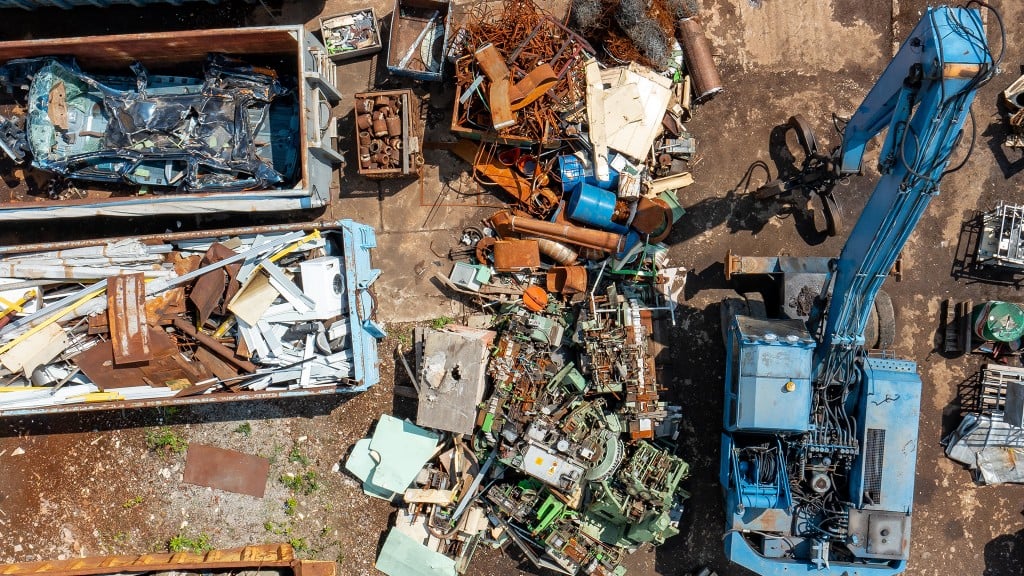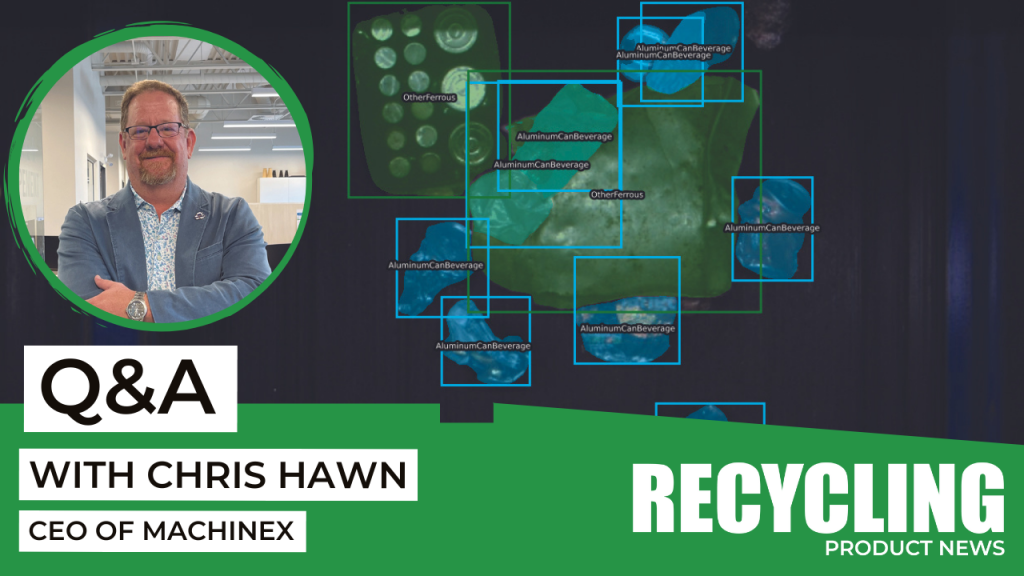How to self-audit your recycling facility
Use our checklist to assess your operations from collection to disposal

For recycling facilities, ensuring operations remain environmentally responsible is paramount. Self-audits play a vital role in this by ensuring compliance with regulations and allowing recyclers to assess their procedures from collection to processing and beyond, identifying areas for improvement and implementing corrective actions where needed. By regularly conducting self-audits, recyclers can mitigate risks associated with non-compliance while simultaneously fostering a culture of continuous improvement and accountability.
An internal audit is a highly effective method for managing risks and minimizing legal liabilities. An audit can identify any current or potential environmental issues and provide a detailed assessment of a facility's operations, waste management processes, and record-keeping systems. When conducting an internal audit, it's important to appoint an auditor who is familiar with the facility's operations and has a solid understanding of environmental regulations. For smaller companies, it can be beneficial to seek assistance from external consultants who specialize in environmental auditing.
According to the Institute of Scrap Recycling Industries (ISRI), the audit process typically involves the following steps: review of legal requirements and liabilities, records review, employee notification, site inspection, and evaluation. Follow their tips below to ensure a smooth and thorough self-audit.
Requirements and liabilities
Before conducting the audit, make sure the auditor understands regulatory obligations and legal liabilities relating not only to the facility itself, but to environmental aspects such as air quality, water management, and land use. Also be sure to determine which local agencies govern the facility's operations, as local regulations can sometimes be stricter than federal ones.
Following both federal and local laws and regulations ensures the protection of natural resources, minimizes pollution, and promotes sustainable practices within the recycling industry. However, non-compliance may result in fines, penalties, legal action, and broken trust among customers, investors, and the public.
Records review
According to ISRI, the following documents should be reviewed thoroughly by the auditor before the inspection:
- Tank testing results
- Inventory records of products and raw materials
- Production schedules
- Purchase records
- Disposal records
- Environmental permits and licenses
- Manifests
- Water discharge inventories
- Material safety data sheets
Existing records offer valuable information about current practices and existing contamination levels, as well as insight into potential issues that may arise in the future. While not all of these records may be available, it's important to gather as much information as possible ahead of the site audit.
Employee notification
During the assessment, the auditor should go over company policies regarding environmental compliance with all employees to ensure they understand the reasoning behind procedures within the facility. When employees are well-informed, they can offer valuable suggestions and are more likely to adhere to environmentally responsible practices, says ISRI.
Inspection
The on-site inspection is the most critical aspect of a self-audit because it provides first-hand insights into the actual environmental practices and conditions within the facility and allows the auditor to verify that all equipment and operations are functioning as intended. If possible, ISRI suggests scheduling the inspection to coincide with critical operations to witness real-time practices, potential emissions, and waste generation.
ISRI recommends recyclers answer these questions to help identify any processes that could be hazardous to the environment:
- Is scrap or waste stored closer than necessary to an adjacent body of water?
- Can you better control used oil?
- Are you screening out sources of potential polychlorinated biphenyl contamination from inbound material?
The auditor should then physically walk through the entire process starting from when materials arrive, following through each step of production until the products and waste are sent off site to customers, storage, or disposal facilities.
Evaluation
After completing the audit, it's essential to compile a thorough evaluation of the facility's environmental practices and performance. This evaluation should include detailed recommendations for future actions that need to be taken to improve compliance and sustainability, as well as a schedule outlining the steps and timelines for implementation. ISRI also offers a list of hotlines and additional resources on its website that can address any technical questions or concerns that arise during the audit process.
Internal audit checklist for recycling facilities
Self-audits play a key role in maintaining the integrity and efficiency of recycling facilities and are essential for identifying areas of improvement, ensuring regulatory compliance and optimizing resource utilization. By conducting regular self-audits, facilities can detect and rectify problems early, minimizing disruptions and enhancing productivity. Use this checklist as a guide to help audit your facility and ensure you're keeping up with ISRI's best practices.
⬜ Material handling
Identify each type of material that your facility handles, including inbound materials, processed materials, and any by-products or residue. Next, determine if any of the materials could be hazardous. According to ISRI, a material is considered hazardous under the Resource Conservation and Recovery Act if it exceeds the specific limits for toxicity, corrosivity, flammability, and reactivity; has been named and listed as a hazardous waste; is a mixture containing a listed hazardous waste; or is derived from the treatment of hazardous waste. Some things to look out for include tanks, batteries, and transformers.
⬜ Used oil
When used oil is not managed properly, it can escape into the environment, causing pollution and environmental damage. To mitigate these risks, auditors must identify all points where used oil is released during facility operations, including machinery, storage tanks, and transfer areas where oil may leak or spill. Once identified, measures must be in place to ensure that used oil is collected and controlled effectively. This involves implementing proper storage and handling procedures, regular maintenance and inspection of equipment to detect leaks or potential issues early on, and having spill containment measures in place to respond quickly to any accidents.
⬜ Air emissions
The audit should pinpoint every possible air pollution source in your facility, like metal shredding or combustion processes, for example. To ensure you're following proper protocols, ISRI recommends asking yourself the following questions during the assessment: is a federal, state, provincial, or local permit or authorization required for any of these operations? If so, do you have the permit? Are you in compliance with it?
⬜ Water discharge
It's essential to determine if any water discharged from your facility flows into a ditch or other channel that ultimately leads to a body of water, such as a river, lake, or ocean. If so, it's imperative to ensure that you have the required permits and understand monitoring requirements and reporting obligations. Similarly, if your facility discharges water into a municipal sewer system, there are often specific requirements regarding the quality and quantity of wastewater that can be discharged into it. In some cases, pretreatment may be necessary.
⬜ Storage tanks
During your self-audit, it's paramount to identify and locate all above- and underground storage tank areas, as well as waste and raw material container storage areas. This is essential for ensuring the safety of employees and the environment by implementing proper handling and storage practices to prevent accidents such as spills, leaks, or fires. Moreover, it enables compliance with regulatory requirements concerning storage capacity, material handling, labelling, and emergency response procedures. By managing storage areas effectively, the facility can minimize the risk of contamination to soil, water, and air, as well as enhance operational efficiency by facilitating streamlined inventory management.
⬜ Radiation
Recyclers need to be vigilant about the potential presence of radioactive contaminants in incoming materials by implementing measures to detect radioactive items before they're received and processed. This typically involves utilizing radiation detection equipment such as Geiger counters during the inspection and sorting processes. Facilities should establish protocols and training programs to ensure employees understand the potential risks associated with handling radioactive scrap, recognize warning signs of radioactive contamination, and know how to respond in case of a suspected radioactive item.
⬜ Batteries
If your facility handles lead-acid batteries, it's important to note that these batteries can pose risks if they are mishandled or improperly disposed of, including soil and groundwater contamination from lead leaching out of the batteries, as well as potential exposure to lead dust during battery dismantling or the recycling process. Lithium-ion batteries, on the other hand, are prone to fire and explosion hazards if mishandled, necessitating strict handling and storage protocols. Employee training is crucial to ensure safe handling practices, as is the use of personal protective equipment and the adoption of best practices for processing hazardous materials.
⬜ Contaminated areas
In areas where spills have occurred, especially those involving potentially hazardous materials, you must assess whether the soil has been contaminated. This is done by gathering soil samples from the affected areas which then must undergo laboratory analysis to determine the concentration of contaminants at your facility compared to regulatory standards. Depending on the findings, remediation measures ranging from soil excavation and removal to bioremediation or soil washing may be necessary to address contamination and mitigate environmental impacts.
⬜ Off-site areas
During your audit, don't forget to inspect off-site areas, particularly waste disposal operations. This includes understanding where your waste ends up and ensuring its proper management. For facilities using haulers to transport waste, confirm that the haulers are indeed delivering to the destination as agreed upon. This includes monitoring hauler activities, maintaining accurate records of waste disposal transactions, and implementing tracking mechanisms to trace waste from generation to disposal. ISRI warns that processors have encountered situations where haulers have disposed of waste at non-designated or improper locations, resulting in legal consequences, financial penalties, and reputational damage.



